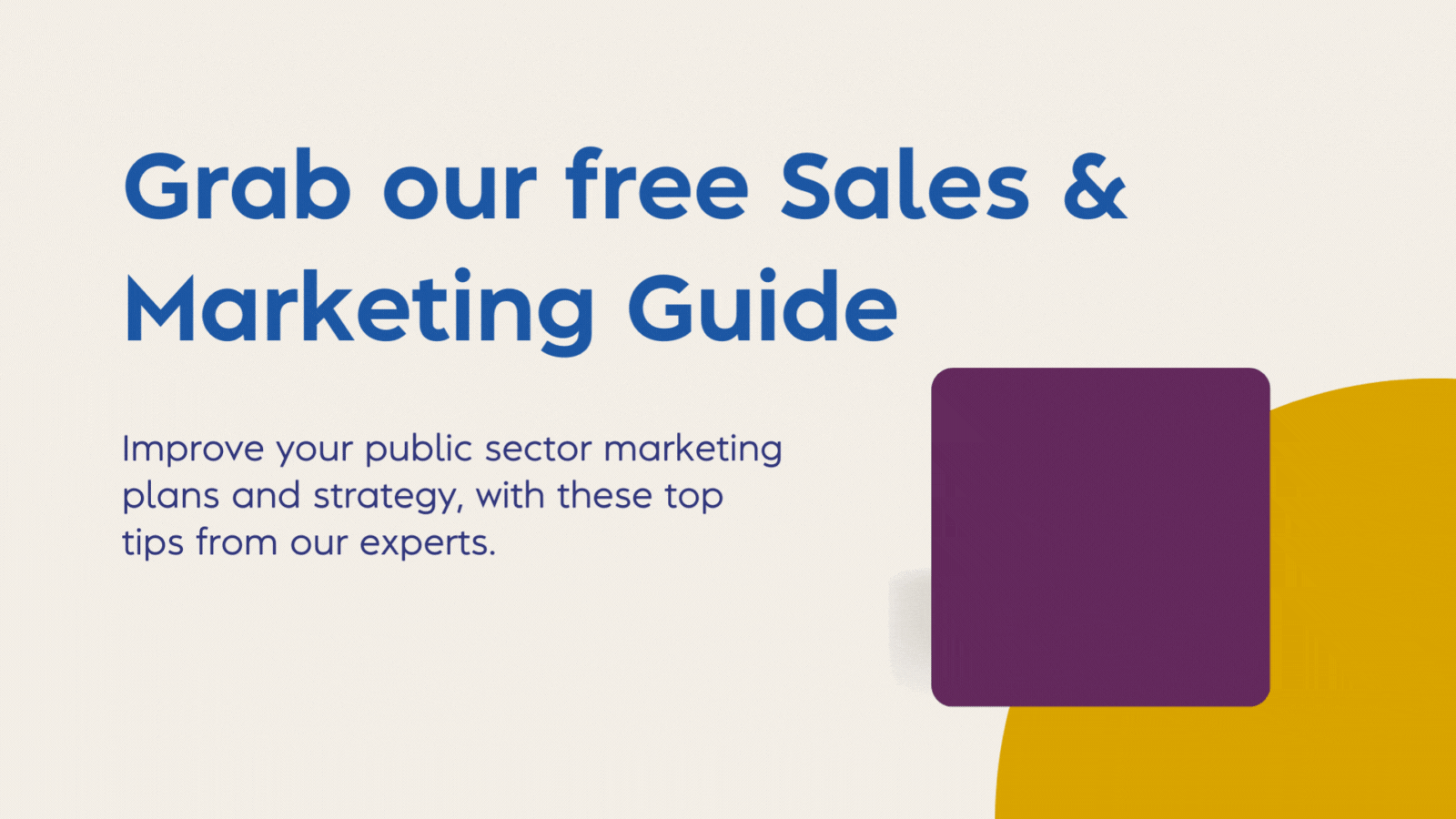When working with our clients, we’re always pushing the fact that the public sector is its own entity – which means it needs its own marketing strategy separate from any B2B or B2C efforts your organisation has in place! Here are our top tips to get you started in your public sector marketing strategy. Following on from this, you may find it helpful to take a read of our ‘Setting a Public Sector Sales and Marketing Strategy’ guide for a more detailed insight into what your strategy should entail.
1. Understand your target market
The public sector operates very differently from any other markets you might be used to. Familiarise yourself with its unique characteristics, from procurement processes and regulations to decision-making structures. And then narrow down! Consider how large the sector is – local government is comprised of 27 counties and 201 district and borough councils in England alone. Central government has over 485 different departments, there are 43 local police forces in the UK… we could go on, but we’re sure you understand. If you are simply targeting ‘the public sector’, you’re probably stretching yourself too thin. Your marketing strategy is unlikely to yield much success!
So, your first step is to develop a firm understanding of your target market’s goals, challenges, and priorities. An effective public sector marketing strategy does exactly this. You must outline the buyer and the problem your solution is solving and then build tactics around this knowledge! Starting off here will enable you to create targeted marketing messages that resonate with the buyer…
2. Nail your messaging
Think about why the public sector needs your solutions; what’s your USP? If you’ve got a particular public sector body in mind to work with, why is that important to you? What changes do you wish to make? Answering these key questions will help you to emphasise the public value of your offerings within your messaging.
It’s also worth taking into account the language and terms used in the public sector and by your particular prospects. This will be what they search, too, whether via general search engines or search capabilities on a framework or DPS.
From this, you can develop a value proposition. Clearly articulate the value your products or services offer to the public sector. Highlight how they can address common pain points or help achieve specific objectives. Think about how your content can provide true value to your audience and position you as a thought leader to help build your reputation and increase your visibility.
3. Leverage the wide array of marketing channels and materials available to you
Public sector buyers don’t live in a vacuum and buy technology just by looking at a listing. They will look up a company’s website, check them out on social media, ask their colleagues or maybe they met you at an event. It is not news that the public sector buys from trusted suppliers that they often already know.
But, how did those suppliers become trusted in the first place? A lot of this has to do with content and networking. This doesn’t mean going all-in on everything, though. Assess what works best for you, your offering, and your target audience. There are plenty of digital marketing channels available to you.
Think about your search engine optimisation (SEO) and how your website can generate leads. Consider creating a public sector microsite or a dedicated webpage that provides detailed information on your approach to working with the public sector. Think about ways your can present your previous wins, perhaps through case studies to show tangible evidence of your capabilities.
Social media marketing in itself requires its own strategy, but the reach and lead generation can be worth the work. It’s a great way for you to promote your success and participation in the public sector market at low cost. LinkedIn and Twitter are especially great platforms. We very recently revamped our Public Sector Social Media Guide, covering everything from channel selection and content to audience engagement and security measures. You can download a copy of the guide here.
Other channels you may already be familiar with include email marketing and content marketing. Suppliers that regularly get picked up by public sector bodies have one thing straight – their websites are full of expert pieces that are of interest to their buyer, they frequently email their white papers to their prospects, and their news stories are picked up by public sector media.
4. Build relationships
Regular public sector suppliers also become part of the conversation – online and offline! In this day and age, establishing relationships with your prospects is incredibly important. Buyers want to see that you understand their problems, know their sector, and are engaged with the debates they care about.
Attend webinars, events and conferences that public sector organisations are hosting; you can learn a lot through networking and you will soon become a familiar face in the crowd. Some events are a no-brainer. Perhaps one of the best investments you can make is to become a member of techUK for example. They work very closely with government and organise numerous Meet the Buyers/ Suppliers events throughout the year. Crown Commercial Service themselves often host supplier engagement sessions for the many frameworks and DPSs they run.
Online, you want to ensure you understand who the key decision-makers and influencers in the public sector are and engage with them via the marketing channels you’ve chosen. Your aim here is to build trust, and the previous point on marketing materials can help you.
We hope these top tips will help you get started in comprising a successful public sector marketing strategy. The four tips we’ve provided will not only help you sell, but they can help you sell faster, shortening those long sales cycles the public sector is often famous for. There’s far more detail required in a full strategy, though – we recommend downloading our full Public Sector Sales & Marketing guide here or by clicking below.




